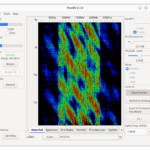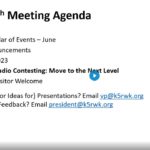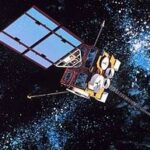By Chip Coker KD4C

The RAB-8 Launch was one like no other! We got off to a shaky start and thought we were going to have an early end, only to have a second life like a literal phoenix rising from the ground (or in this case, Lake Lewisville)!
Let me explain.
The launch prep at the Denton RC Park started as a misty if not slightly rainy affair, but it promised to clear up prior to scheduled 9am launch time. Balloon and payload prep went normally. When time came to launch, it was still cloudy and overcast and there was a brief discussion on whether to wait a bit until the skies cleared. Ultimately, the balloon was launched normally shortly after 9am.
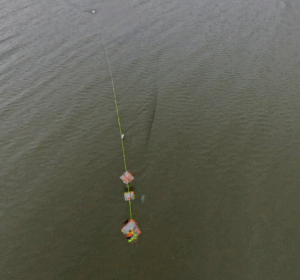
With the long projected flight path, the chase team had to pack and get on the road almost immediately. When the balloon got to about 20,000 feet, it started to drop in altitude, but not rapidly. It didn’t appear that the balloon had popped, but it was sinking and we didn’t know why. Worse, the projected landing was in Lake Lewisville! We had some brief panic and spent an hour in and around the lake watching the balloon descend and wondering if the balloon was going to the water. Ultimately, the payload string dipped into the lake and the balloon dragged the string across to Big Sandy Park, where, inexplicably the balloon began to rise again.
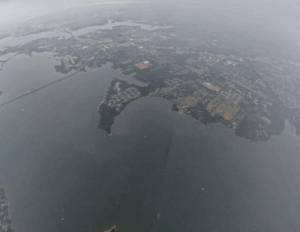
We first thought that the lower-most payload (the FT-8 transceiver) had separated as it was literally dragged across Lake Lewisville by the still-inflated balloon. However, after the balloon rose about 1000 feet, the FT-8 payload was spotted and was still attached.
Nearest we can figure, since it was raining or very moist during launch, the balloon accumulated ice on the way up and that added weight brought the balloon back down. The ice melted at the surface and then the balloon started up again! From there, it was a relatively normal – if long – trajectory towards East Texas (somewhere between Longview and Shreveport). The launch team had resigned to a very short flight, but now we had a delayed hours-long chase ahead.
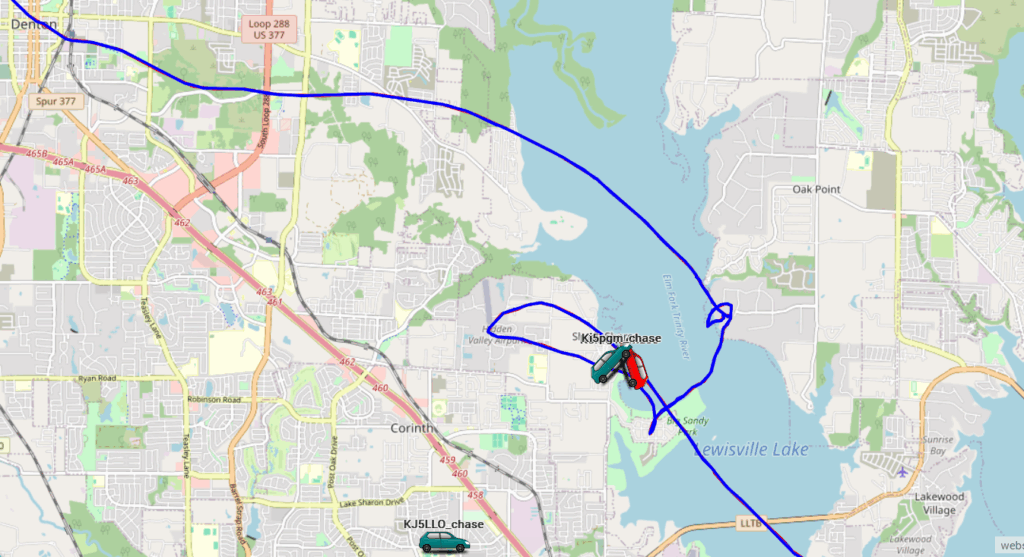
During the almost 5 hour flight (we expected 2-1/2 to 3), the cross-band repeater was the star of the show (especially for those that didn’t give up and stayed for the second rising). It didn’t quite last the entire five hours, but the four that it was running saw lots of traffic from all across the region (Oklahoma to Brownsville). The HD imagery was shrouded in clouds for most of the flight but there were some critical images. There were at least 13 confirmed QSOs from the 20M FT-8 tranceiver in the 20 minutes before it got wet. PSK Reporter shows we were heard in Australia.
In the “new technology” department, we flew a newly-developed method of linking payloads through Bluetooth Low Energy (BLE). This uses the embedded data transport capability of the High-Definition Image wenet protocol to get data to the ground stations. Using the BLE linking, payloads and sensors on the balloon can use our data transport channel and don’t have to build and fly their own, saving weight and complexity. This was co-developed by our own Bobby W5NBC, who unfortunately is leaving us to go to work for Apple in California.

After all the early excitement, we needed an easy landing and recovery, and thankfully that’s what we got. The balloon burst at around 85,000 feet, short of the predictions, but given what it had been through, it was probably tired. Instead of bursting, the balloon split and mostly stayed intact. The added weight caused a fairly fast descent into the hilly area southeast of Sulphur Springs. Luckily for us, the complete payload string landed in a field of very tall grass, instead of many of the surrounding tall trees. Roger AE5EZ was first to have eyes on the payload string. Everything was recovered, and notably the FT-8 payload still had chunks of frozen Lake Lewisville ice. In addition to Head Balloonatic Andrew KE5GDB, thanks to the recovery team of Alice KI1TEN, Tony W5ADC, Roger AE5EZ, Ian AE5ID, and Chip KD4C (yes I was there too).
This is the last planned launch of the season, but we’ll be back at it next spring, when we get favorable air currents again. We hope that you will join us then.
If you “worked” any of the balloon payloads, we hope that you’ll apply for the “worked all payloads” award. Collect the whole set! We plan on a unique QSL for each launch.
Some Pictures….
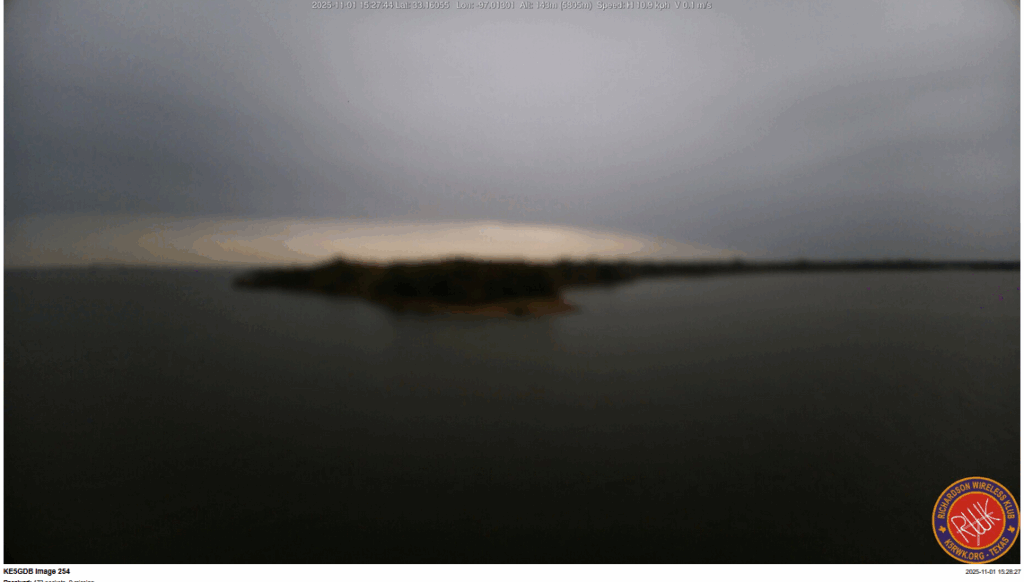
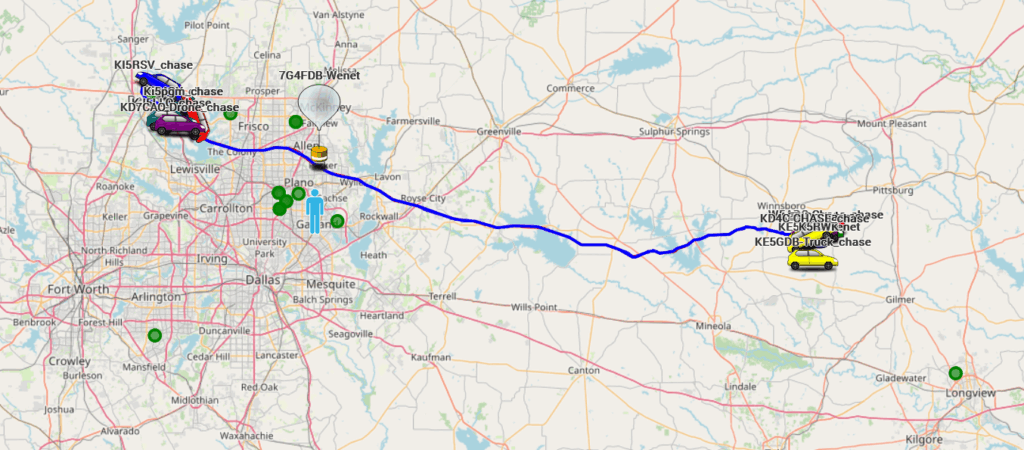


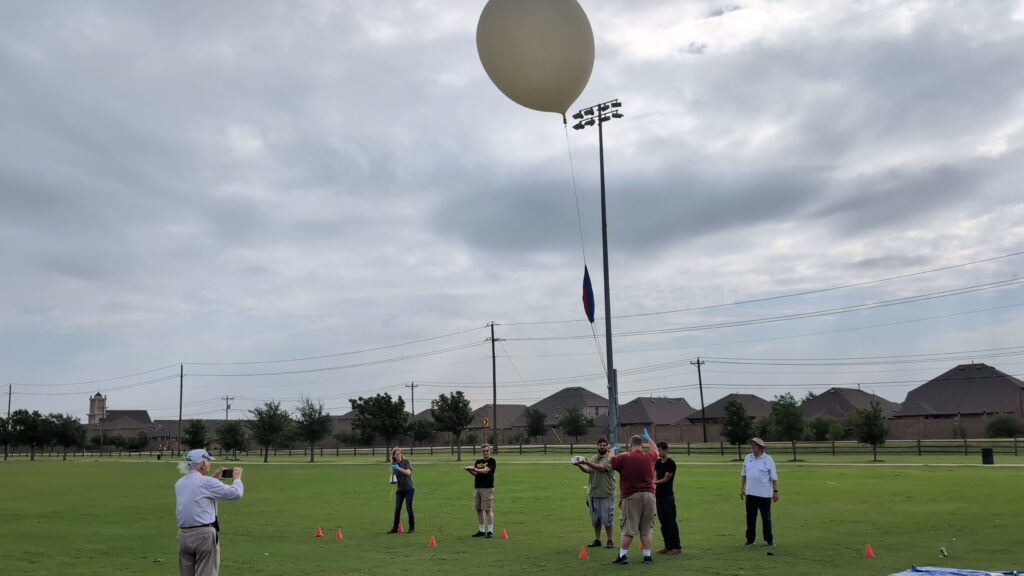

Flight Goals
- Test improved launch methods — new scale, new balloon neck mechanism
- Finally capture some 360° camera footage from launch to burst — had battery issues on our 8/23 launch, WILL WE GET IT THIS TIME?!
- Measure balloon pressure delta with fancy Honeywell sensor
- Demonstrate 20m FT-8 payload, hopefully with stations local and afar
- Demonstrate Pi Pico W bluetooth interpayload communication
- Collect data from inertial sensors in neck of balloon to determine balloon burst status (for use in future cutdown payload)
| Payload | Callsign | Frequency | Participate |
| SSTV + Wenet / SSDV | KE5GDB | 432.5MHz SSTV Robot 36 (FM) 431.5MHz Wenet 96kbaud I2S | SSTV on the air – Robot 36 Wenet live images at http://ssdv.habhub.org/KE5GDB Wenet RX |
| Crossband Repeater | K5RWK | 446.0MHz Downlink 147.435MHz + PL67.0 Uplink | On the air |
| FT-8 Transponder | K5RWK | 14.074MHz | On the air |
| Tracker – RS41 BMP680 Sensor | K5RWK | 432.700 @ 100 baud USB (-1KHz dial) | On the air / track online How to decode Decode online |
| Tracker – RS41 Tried and true | K5UTD | 432.900 MHz USB (-1KHz dial) | On the air / track online How to decode Decode online |
| 360 Camera | SD card | Video after launch | |
| Balloon Neck Sensors | W5ADC | Bluetooth -> Wenet | Grafana @ balloon.k5nbc.com |
| Radar Reflector | KI1TEN | S-band, C-band | Major bonus points for seeing it on WSR-88D or TDWR |
Ways to participate from afar
- Track the payloads at https://amateur.sondehub.org/ (look for K5RWK, K5UTD, and KE5GDB-Wenet)
- Get in the log by making an FT-8 QSO with the balloon on 20m – callsign K5RWK
- Receive SSTV pictures in real-time – 432.5 MHz / Robot 36
- Make contacts through the crossband repeater – 147.435MHz PL 67.0 uplink, 446.0 (no PL) downlink
- Decode our tracking payloads – “Horus Binary v2” on 432.6, 432.7, and 432.9 MHz (decode using upper sideband and Horus GUI or https://horus.sondehub.org)
- Watch live images stream in via Wenet at https://ssdv.habhub.org/KE5GDB
Participate in person
- Launch site Denton RC Airfield
- Launch prep begins at 8:00AM with a target launch time of 9:00AM
- If chasing, please carpool — we’ve had congestion issues before
- Chase simplex is on 146.54MHz — please bring an HT that can talk on 146.54 if chasing
- Chase crew should bring boots, long pants, plenty of bug spray, and lots of water! Be prepared for a bit of a hike and high temperatures!
We hope to see you at the launch or hear you on the crossband repeater!


